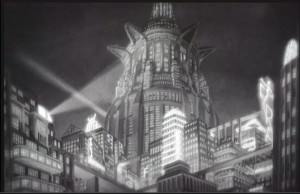Currently, Melbourne’s municipal government is working hard on achieving zero emissions for the down town core. Though there are certainly critics of this effort, it seems to enjoy overwhelming support from both citizens of Melbourne and those who champion cleaner technology and reducing our carbon footprint. In many ways, Melbourne is a trailblazer for clean technology and that’s very apparent with efforts to refurbish existing infrastructure to meet a higher and more efficient standard. But what falls to the wayside in the wake of such advances? Studies in recent years have ranked Melbourne 321st most affordable city to live out of 325 cities that were examined. The Demographia International Housing Affordability Survey called Melbourne “severely unaffordable” in 2011 and according to government statistics, Melbourne’s rental vacancy rate was 1.3 per cent in 2010 while only 1% would be considered affordable for low-income earners. So what does this say about Melbourne? Of course, it can be argued that housing costs can be tied into a larger real estate shortage in Australia, but should it not be a priority for local officials to make Melbourne an affordable place to live even for its most vulnerable citizens? The answer in my mind is simple: it should be, but it’s not. Though it’s easy to interpret this sustainable development movement in Melbourne as a genuine social and political statement, I would argue that these efforts are not much more than a façade and an attempt to attract business to the down town core while ignoring the needs of their citizens. Instead of making policy around attracting wealthier residents, why not try to improve life for the residents who already live in Melbourne?
That being said, encouraging economic growth is an essential part of maintaining a free-enterprise market in the city. However, if this trend continues there will undoubtedly be an exodus of middle to low-income earners to surrounding areas who will then have to make long commutes into the city. Also, it’s important that I clarify: I indeed applaud efforts towards sustainability, but not at the expense of expelling all but the well-to-do from the down town core–especially one so notable for its vibrant diversity.
Read more: http://www.theage.com.au/national/the-rental-pressure-cooker-20100402-rjvb.html#ixzz2mZthsY55
http://www.theage.com.au/national/the-rental-pressure-cooker-20100402-rjvb.html



